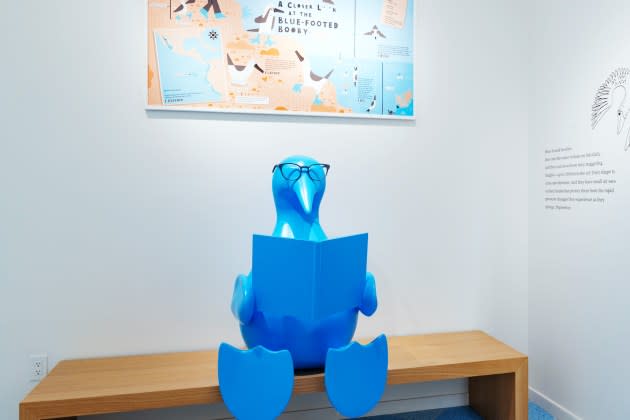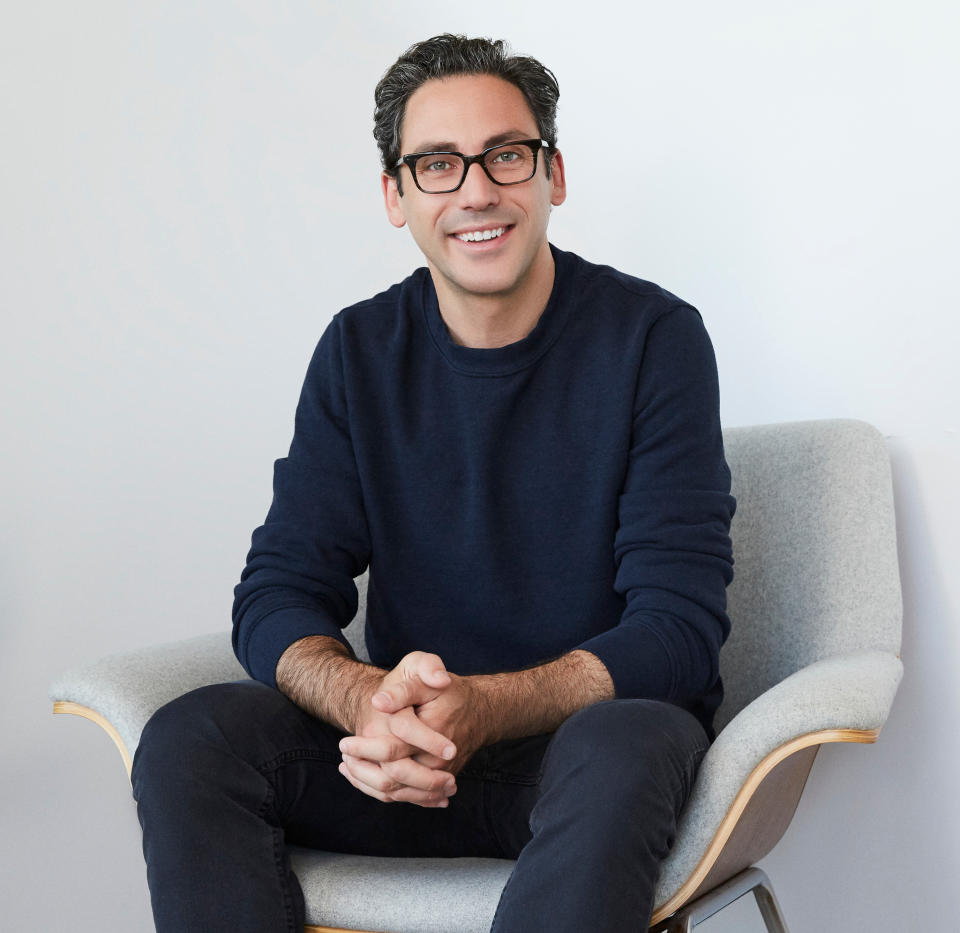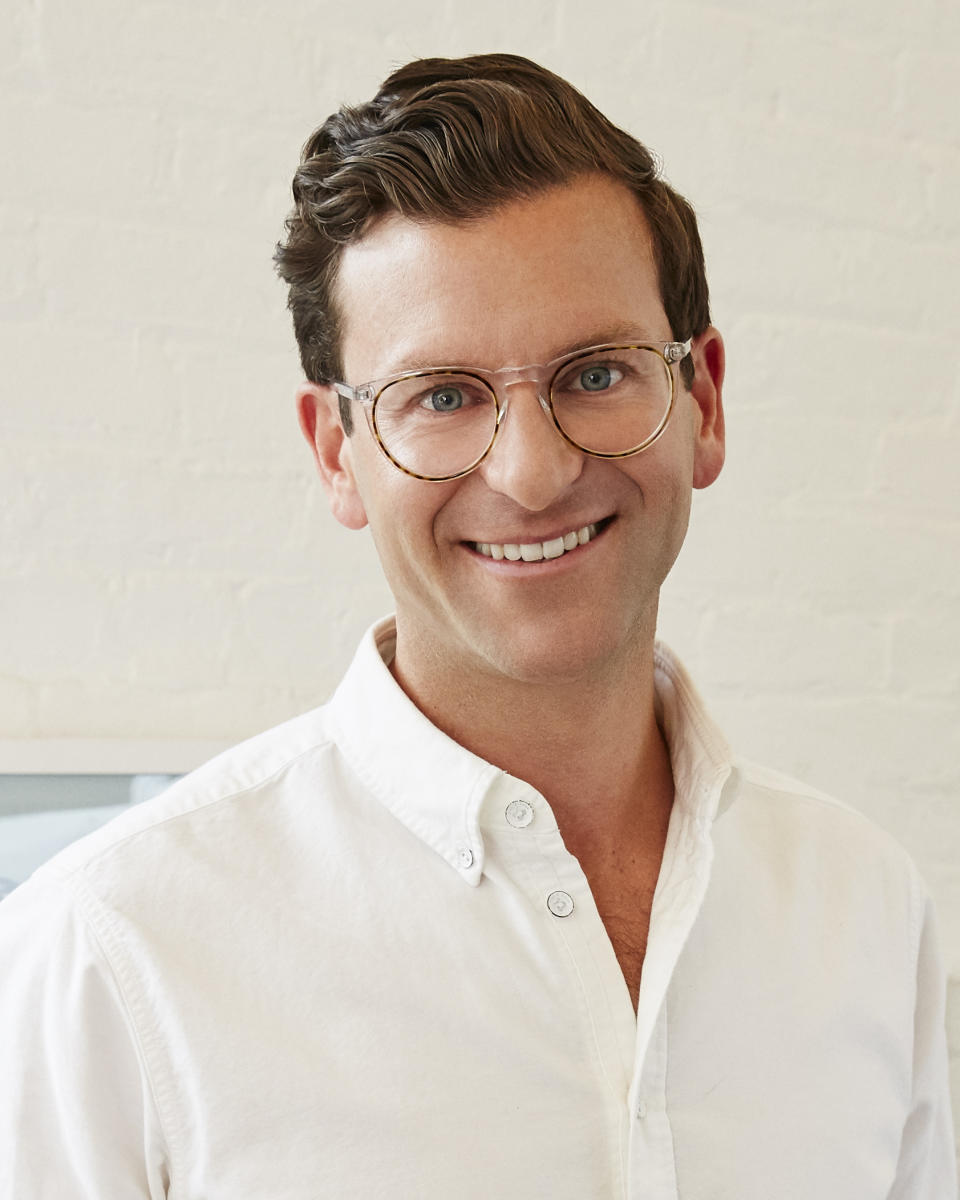The Tao of Being the Warby Parker of Eyeglasses

Warby Parker Inc. has always stood out.
In the beginning, it was as a purpose-led and disruptive newcomer trying to upset the status quo by going direct-to-consumer.
More from WWD
The model thumbed its nose at an optical market that just didn’t work that way. And it gained enough traction that, for a time, there were many Warby Parkers — the original and a host of start-ups following in its wake, cutting middlemen out the supply chain and being hailed as “The Warby Parker of” some category or another.
Glossier was the Warby Parker of makeup, Harry’s Shave Club was the Warby Parker of razors, Tecovas was the Warby Parker of cowboy boots, and on and on.
Warby Parker was the “It” brand for downtown hipsters and venture capitalists alike.
They might not have known it at the time, but it was a dangerous spot for cofounders and co-chief executive officers Neil Blumenthal and Dave Gilboa. They were start-up standouts in a world obsessing over — and throwing money at — young CEOs looking to change the world.
But Ben Lerer, managing partner at Lerer Hippeau, and the first venture fund to invest in Warby Parker, said Blumenthal and Gilboa were never “bumped off” their long-term vision.
“At a lot of companies when they get really hot, that’s when mistakes happen — Peloton, there’s a long list of these companies,” Lerer said. “These guys, they were the hottest thing in the world and eventually the freshness of the story wears off and people move on to the next big thing. But often, companies don’t want to give up that gaze and they start committing unnatural acts to kind of keep that shine and inevitably, that reinforces the shine coming off.”
Warby Parker instead remained Warby Parker.
“They could have gone and started selling watches,” Lerer said. “They could have found themselves in other categories and they didn’t do it. Think about wholesale, going and building really big partnerships with 1,000 new doors. International is also this shiny object, you can go and imagine this business doubling and tripling. So many companies have made that move and lived — or not lived — to regret it.
“There’s no silver bullet in building these businesses,” Lerer said. “The silver bullet for Warby Parker is that they never looked for a silver bullet.”
Thirteen years in, the superstar start-up has become a case study in steady brand building, brick-and-mortar retail expansion and in building a business that’s about more than business.
That might not be the kind of rocket ship-like growth the world was expecting of Warby Parker a decade ago — when it was at the vanguard of a generation of buzzy start-ups — but it’s the company that Blumenthal and Gilboa were building all along.
In a joint interview with WWD, the co-CEOs seemed very comfortable right where they are.
“We’ve always had grand ambitions, but hopefully not grand egos,” said Blumenthal. “Our wives keep us in check. And then one of the core values at the company is actually to take our work seriously, take our work and our impact seriously, but not ourselves.
“Being on the cover of a magazine is super nice, but it’s not why we work 80 hours a week,” Blumenthal said. “We work because there’s a billion people on the planet that don’t have access to glasses, and we think that that’s crazy 800 years past the invention of glasses.”
Warby Parker’s Buy a Pair, Give a Pair program has donated more than 13 million pairs of glasses to people in need.
Before listing its stock publicly, the company took two steps that helped make sure that mission was baked into its corporate structure. Warby Parker became a B Corp and it adopted the mantle of a “public benefit corporation” — a legally binding status that it advocated for and one that allows management to take the interests of all stakeholders into account.
The company then skipped the traditional IPO for a direct listing, which let it transfer shares into the public market without actually raising any money or engaging a lot of investing middle men — very much in keeping with what got Warby Parker there in the first place.
It’s a setup that helps the co-CEOs maintain their steady style, even when the market is rough.
And Warby Parker has definitely had a tough go of it on Wall Street the last couple years, seeing its market capitalization drop to under $1.5 billion from its peak of $6.7 billion in November, when new consumer stocks were booming.
Gilboa said: “Instead of worrying about what’s going to happen to our profit in the next quarter, or worrying about stock price movements, how can we think about what’s going to be best for all the stakeholders that we touch over the next decade or the next 50 years, and what are the right long-term decisions that enable us to get there with that stakeholder-centric view?”
That doesn’t mean the stock price doesn’t matter.
Blumenthal said: “We are working hard every day to get the share price back to where it was. One of the biggest lessons I think of the last three years is the amount of external factors that impact share price, whether it’s interest rates or what have you.… We’re in a market environment that’s a show me, don’t tell me. So we have some proving to do.”
The brand is also being tested as it looks to stay hip and keep younger consumers while continuing to expand with progressive lenses, which by necessity cater to an older crowd.
“We think that we can walk and chew gum at the same time there,” Blumenthal said. “And if we think about great brands like Nike, like Apple, they’ve been able to build products and services that resonate with multiple communities, and we think we can do that.”

Warby Parker’s losses for the second quarter narrowed to $15.9 million from $32.2 million a year earlier, helped by lower stock-based compensation and reduced marketing costs. Adjusted earnings before interest, taxes, depreciation and amortization increased to $14.2 million from $6 million.
Revenues this year are expected to range from $655 million to $664 million, for growth of up to 11 percent, with adjusted EBITDA of $52 million.
“We’ve never been motivated by trying to make short-term decisions and try to see short-term impact,” Gilboa said. “The fact that we are a public benefit corporation, the fact that we set up dual class shares enables us to continue to have that long-term thinking and not worry as much.”
Between them, Blumenthal and Gilboa own more than 18 million Class B shares of Warby Parker, giving them control of 63 percent of the voting rights and the power to set the tone and direction of the company.
And Gilboa said there are big things ahead.

“There’s this really massive second and third act as we move beyond selling glasses into other parts of our category,” he said. “So moving into contact lenses, eye exams — both $10 billion-plus opportunities — and going deeper into health care diagnostics, which both reduces friction for our customers who are buying glasses because every one of them needs to get a prescription…. We still are in the very early innings in terms of selling that core glasses product and scaling that part of our business, but are really excited about the second chapter where they’re just massive incremental business opportunities.”
This is the kind of methodical, long-term thinking that all the “Warby Parker ofs” haven’t necessarily embraced.

Joel Cutler, cofounder and managing director of General Catalyst, an early investor in Warby Parker, said he made a point to not invest in any of the “Warby Parker ofs.”
“You want to invest in the innovator,” Cutler said. “They were the classic disrupter.”
He said the company had a big target in the disruption-ready optical industry.
“This is the one that makes sense,” said Culter, noting Warby Parker found its place with not just a vertical business model, but “an undying focus on customer service.”
Online, that extends from the company’s early days with home try-on to virtual try-on today, the addition of contact lenses and progressive lenses and, of course, the stores.
While the company has maintained its digital roots and is looking to keep growing online, it is also very much a retailer, with 217 stores, plans to open 40 this year and its sights on at least 900 U.S. stores over time.
Retail is now a cornerstone of the business, but wasn’t a no-brainer.
When stores started to roll out with the first door opened in 2013 in New York’s SoHo, Cutler said, “That was like, ‘Are you crazy? You’re opening stores, you’re an online brand.’”
That’s because Warby Parker was also an online disrupter at the start. When it opened stores it started to move a little more into the mainstream — as so many of the d-to-c crowd did — learning that while there was a lot of buzz online, the money was still largely in bricks-and-mortar. It was an early sign that the brand was willing to change direction or go its own way.
“Dave and Neil are in this forever, they’ve built a really durable business and I think the brand is lasting,” Cutler said. “Stocks go up and stocks go down and good businesses just continue to be good businesses and get better all the time.”
Best of WWD
Solve the daily Crossword

